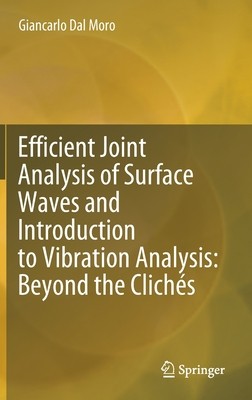
- Išsiųsime per 10–14 d.d.
- Autorius: Giancarlo Dal Moro
- Leidėjas: Springer
- ISBN-10: 3030463028
- ISBN-13: 9783030463021
- Formatas: 15.6 x 23.4 x 1.8 cm, kieti viršeliai
- Kalba: Anglų
- Extra -15 % nuolaida šiai knygai su kodu: ENG15
Efficient Joint Analysis of Surface Waves and Introduction to Vibration Analysis: Beyond the Clichés + nemokamas atvežimas! | knygos.lt
Atsiliepimai
Aprašymas
This book bridges the gap between theory and practice, showing how a detailed definition of the shear-wave velocity (VS) profile can be efficiently obtained using limited field equipment and following simple acquisition procedures.
It demonstrates how surface waves (used to define the VS profile) and vibration data (used to describe the dynamic behaviour of a building) can be recorded using the same equipment, and also highlights common problems, ambiguities and pitfalls that can occur when adopting popular methodologies, which are often based on a series of simplistic assumptions.
Today, most national and international building codes take into account a series of parameters aimed at defining the local seismic hazard. Sites are characterised based on the local VS profile, and the dynamic behaviour of existing buildings is defined through the analysis of their eigenmodes. The book includes a series of case studies to help readers gain a deeper understanding of seismic and vibration data and the meaning (pros and cons) of a series of techniques often referred to as MASW, ESAC, SPAC, ReMi, HVSR, MAAM and HS. It also provides access to some of the datasets so that readers can gain a deeper and more concrete understanding of both the theoretical and practical aspects.
EXTRA 15 % nuolaida
Kupono kodas: ENG15
Akcija baigiasi už 6d.00:30:41
Nuolaidos kodas galioja perkant nuo 10 €. Nuolaidos nesumuojamos.

- Autorius: Giancarlo Dal Moro
- Leidėjas: Springer
- ISBN-10: 3030463028
- ISBN-13: 9783030463021
- Formatas: 15.6 x 23.4 x 1.8 cm, kieti viršeliai
- Kalba: Anglų
This book bridges the gap between theory and practice, showing how a detailed definition of the shear-wave velocity (VS) profile can be efficiently obtained using limited field equipment and following simple acquisition procedures.
It demonstrates how surface waves (used to define the VS profile) and vibration data (used to describe the dynamic behaviour of a building) can be recorded using the same equipment, and also highlights common problems, ambiguities and pitfalls that can occur when adopting popular methodologies, which are often based on a series of simplistic assumptions.
Today, most national and international building codes take into account a series of parameters aimed at defining the local seismic hazard. Sites are characterised based on the local VS profile, and the dynamic behaviour of existing buildings is defined through the analysis of their eigenmodes. The book includes a series of case studies to help readers gain a deeper understanding of seismic and vibration data and the meaning (pros and cons) of a series of techniques often referred to as MASW, ESAC, SPAC, ReMi, HVSR, MAAM and HS. It also provides access to some of the datasets so that readers can gain a deeper and more concrete understanding of both the theoretical and practical aspects.




Atsiliepimai